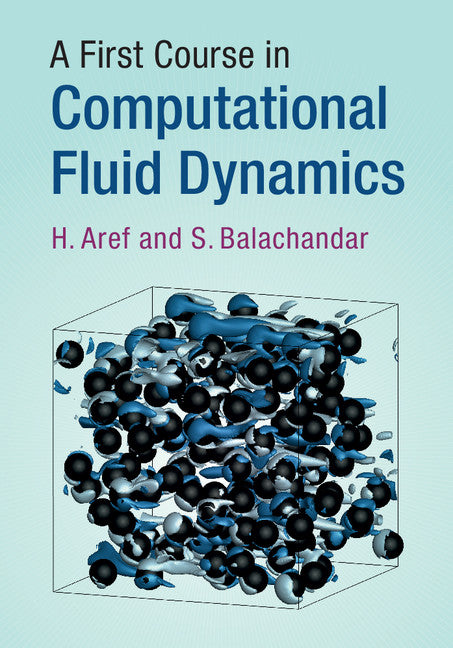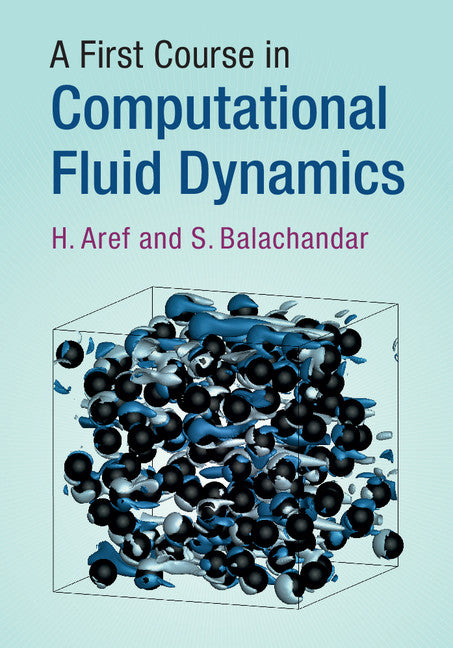Freshly Printed - allow 3 days lead
Couldn't load pickup availability
A First Course in Computational Fluid Dynamics
This book provides a broad coverage of computational fluid dynamics that will interest engineers, astrophysicists, mathematicians, oceanographers and ecologists.
H. Aref (Author), S. Balachandar (Author)
9781107178519, Cambridge University Press
Hardback, published 12 October 2017
404 pages, 64 b/w illus. 6 colour illus. 9 tables 135 exercises
25.3 x 18 x 2.3 cm, 0.96 kg
'The strength of this book lies in its emphasis on a complete presentation of the underlying theories followed by clear steps and concise formulation applied to a plethora of problems, which include basic numerical schemes such as Euler and Runge-Kutta methods and relatively advanced schemes such as the pseudo-spectral method, spectral methods with body fitted grids, and the immersed boundary method … These attributes make it highly attractive as a technical elective for engineering upperclassmen (following an introductory course in fluid mechanics) and forgraduate students, including those studying applied mathematics. Recommended.' R. N. Laoulache, Choice
Fluid mechanics is a branch of classical physics that has a rich tradition in applied mathematics and numerical methods. It is at work virtually everywhere, from nature to technology. This broad and fundamental coverage of computational fluid dynamics (CFD) begins with a presentation of basic numerical methods and flows into a rigorous introduction to the subject. A heavy emphasis is placed on the exploration of fluid mechanical physics through CFD, making this book an ideal text for any new course that simultaneously covers intermediate fluid mechanics and computation. Ample examples, problems and computer exercises are provided to allow students to test their understanding of a variety of numerical methods for solving flow physics problems, including the point-vortex method, numerical methods for hydrodynamic stability analysis, spectral methods and traditional CFD topics.
1. CFD in perspective
2. Mappings
3. Ordinary differential equations – initial value problem
4. Spatial discretization
5. Boundary and Eigenvalue ODEs
6. Methods based on functional expansions
7. Partial differential equations
8. Multi-dimensional partial differential equations
References
Index.
Subject Areas: Mechanics of solids [TGMD], Atmospheric physics [PHVJ], Dynamics & statics [PHDT], Fluid mechanics [PHDF]


